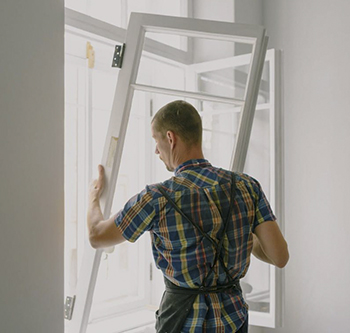Defining hazardous areas
Contents |
[edit] How do we define a hazardous area?
In terms of explosive risk, a hazardous area is an environment in which an explosive atmosphere is present (or may be expected to be present) in quantities that require special precautions for the construction, installation and use of equipment. In this article we explore the challenges faced in the workplace, the risk control measures, and the required competencies to work safely.
[edit] Defining and mitigating risks
Fire and explosion are, without doubt, a major hazard and one that electrical contractors may face in a range of projects and working environments.
It is a consequence of modern life that we manufacture, store or handle a range of gases or liquids that are deemed flammable, and a range of dusts that are deemed combustible. These substances can, in certain conditions, form explosive atmospheres and these can have major and tragic consequences.
Most of us are familiar with the fire triangle – remove any one of the three elements and the fire cannot occur, but what does this mean in the context of hazardous areas? When breaking this down into its simplest terms it is essentially
- a combination of a certain amount of release or leak of a particular substance or material
- mixing with ambient oxygen and
- the presence of a source of ignition.
While we can introduce various measures to prevent an unintended release of a flammable or combustible material, we cannot completely rule this out. In most instances, we can do little about the levels of oxygen in the air, but we can have significant influence on sources of ignition, for example electrical equipment.
Hazardous areas are documented on the hazardous area classification drawing and are identified on site by the triangular “EX” sign. Here, amongst other key information, zones are split into three types depending on the hazard, the likelihood and duration that an explosive atmosphere will exist; Zone 0 or 20 is deemed the most hazardous and Zone 2 or 22 is deemed the least.
It is in these areas that we find specific requirements for the types of electrical equipment and installations that are designed not to present a source of ignition. The methods by which this is achieved can vary so it is critical that the special features of this electrical equipment and installation is not compromised.
Have you heard of terms such as “flameproof”, “increased safety” or “intrinsic safety”? Identified by special markings, these are just a few examples of the types of protection (or protection concept) employed by the electrical equipment and installation. To preserve these special features requires a combination of the correct design, equipment selection and installation techniques. This is then verified through inspection and testing and is preserved throughout the life of the installation by employing the correct maintenance techniques, supplemented by periodic inspection.
When all these measures are taken, they should also be documented. The verification dossier includes information such as the hazardous area classification drawing, manufacturers’ documentation, equipment certification, design drawings and calculations, inspection records, and records of a person’s competency and continual professional development (CPD), such as via ECA’s eCOMS software*.
[edit] Creating a skilled and competent workforce
Given the potential consequences of an explosion and the specialist nature of these activities, it is vital that those undertaking this work are competent to do so. CompEx is the international scheme for competency validation and certification of those who work in explosive atmospheres, offering a range of qualifications to develop and verify a person’s knowledge and skills through a combination of training and assessment.
The scheme has qualifications for a variety of employees working in all industries at varying levels. Non-technical staff may attend a Foundation Course (ExF) to gain an overall appreciation of the hazards and control measures, whilst technicians may undertake a more specialised qualification. This addresses the requirements associated with equipment selection, installation, maintenance and inspection. CompEx also offers qualifications aimed at those who are responsible for the design and management of installations and the persons employed at hazardous installations.
The subject of hazardous areas is a very serious one, with some unique challenges. CompEx provides a methodology that can offer verifiable core competency validation against a range of activities and hazardous areas. For more information and to see the courses offered please visit:
- ECA provides Members with free access to eCOMS, a tool which allows them to record contractor training, supervision and CPD. Visit www.eca.co.uk for more.
This article originally appeared on the ECA website as "How do we define a hazardous area?" dated November 17 and was written by Gary Parker, ECA Senior Technical Manager.
--ECA
[edit] Related articles on Designing Buildings
- As Low As Reasonably Practicable (ALARP).
- Causes of sinkholes.
- Competent person.
- Construction hazards.
- Hazard pay.
- Hazardous substances.
- Health and safety.
- Health and safety file.
- Major hazard for planning purposes.
- Major hazard sites, installations and pipelines.
- Near miss.
- Project risk.
- Risk assessment.
- Risk in building design and construction.
- Risk management.
- Risk register.
- Safety.
- Safety management.
Featured articles and news
Skills England publishes Sector skills needs assessments
Priority areas relating to the built environment highlighted and described in brief.
BSRIA HVAC Market Watch - May 2025 Edition
Heat Pump Market Outlook: Policy, Performance & Refrigerant Trends for 2025–2028.
Committing to EDI in construction with CIOB
Built Environment professional bodies deepen commitment to EDI with two new signatories: CIAT and CICES.
Government Grenfell progress report at a glance
Line by line recomendation overview, with links to more details.
An engaging and lively review of his professional life.
Sustainable heating for listed buildings
A problem that needs to be approached intelligently.
50th Golden anniversary ECA Edmundson apprentice award
Deadline for entries has been extended to Friday 27 June, so don't miss out!
CIAT at the London Festival of Architecture
Designing for Everyone: Breaking Barriers in Inclusive Architecture.
Mixed reactions to apprenticeship and skills reform 2025
A 'welcome shift' for some and a 'backwards step' for others.
Licensing construction in the UK
As the latest report and proposal to licence builders reaches Parliament.
Building Safety Alliance golden thread guidance
Extensive excel checklist of information with guidance document freely accessible.
Fair Payment Code and other payment initiatives
For fair and late payments, need to work together to add value.
Pre-planning delivery programmes and delay penalties
Proposed for housebuilders in government reform: Speeding Up Build Out.
High street health: converting a building for healthcare uses
The benefits of health centres acting as new anchor sites in the high street.
The Remarkable Pinwill Sisters: from ‘lady woodcarvers’ to professionals. Book review.
Skills gap and investment returns on apprenticeships
ECA welcomes new reports from JTL Training and The Electrotechnical Skills Partnership.
Committee report criticises UK retrofit schemes
CIOB responds to UK’s Energy Security and Net Zero Committee report.


























Comments
[edit] To make a comment about this article, click 'Add a comment' above. Separate your comments from any existing comments by inserting a horizontal line.